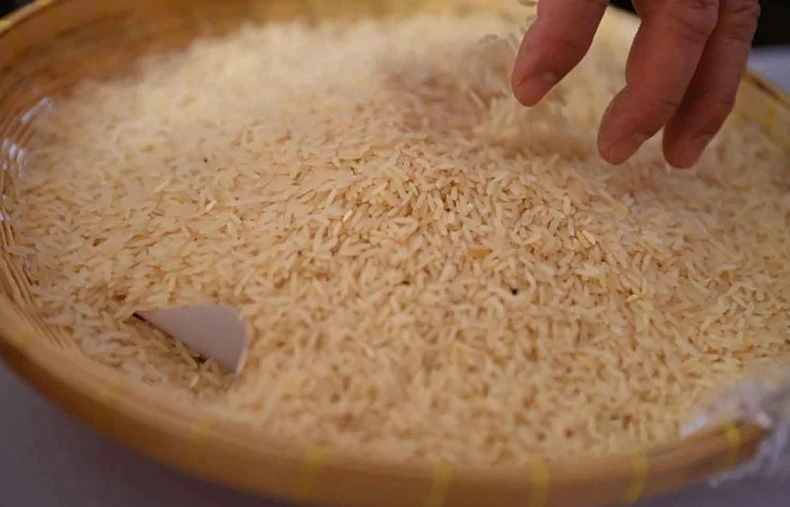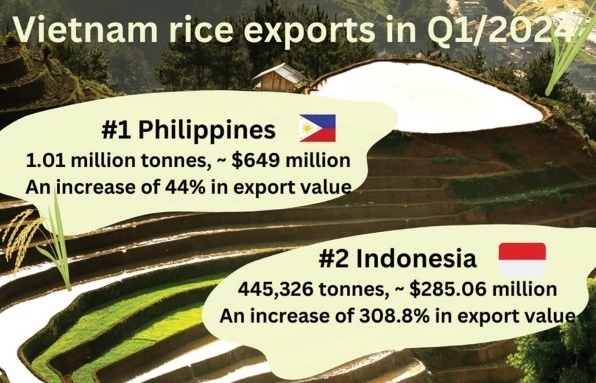Rice exporters’ appetite to be met
 |
| illustration photo |
According to statistics by Thai Rice Exporters Association the average price of Thai's four major rice export items stood at $500 per tonne in late March, 2011 against $520 per tonne in January, 2011.
Vietnam Food Association statistics reflect the same situation. Accordingly, Vietnam exported 480,000 tonnes of rice with price averaging $503 per tonne in January. It shipped 435,000 tonnes abroad in the first 24 days of March at price averaging $449 per tonne. This indicated the fact that until present rice export price going downward has been a common trend worldwide.
One of the reasons behind that poor scene was the difference between the rice supply-demand situation and that of two other key food staples- wheat and maize.
The latest US Department of Agriculture forecast shows that the world rice output would hike 10.6 million tonnes in this year crop season over the previous one while world consumption will increase by around 8.7 million tonnes.
Meanwhile, the output of wheat and maize which accounts for nearly 80 per cent of the world’s total output of three key food staples-rice, wheat and maize will undergo a decline of 62.7 million tonnes while consumption will augment by 23.3 million tonnes.
However, the key reason leading to falling rice export price was changes to rice import policies of the Philippines, a leading rice importer globally.
The Philippines reportedly stated that it would import 860,000 tonnes of rice only in 2011 on the back of bonanza crops. Of the volume, the National Food Authority (NFA) will import 200,000 tonnes and the remainder will be imported by private firms. In 2010, NFA imported over 90 per cent in this country’s total rice import volume of 2.4 million tonnes.
Industry experts then forecast the price of rice will surely rebound when a slew of Philippines private firms race into buying this huge rice volume (660,000 tonnes).
Besides, the total import volume of rice the Philippines will buy is forecast to exceed the proposed 860,000 tonnes and this would warm up the world rice market.
Philippines' rice production statistics show that in the past decade less than one million tonnes of paddy was added in its rice bumper crop against average annual growth level of less than 450,000 tonnes of paddy. Meanwhile, to avoid a nosedive in national rice reserves this country would need one million tonnes of paddy more, but this did not happen in the past decade.
What the stars mean:
★ Poor ★ ★ Promising ★★★ Good ★★★★ Very good ★★★★★ Exceptional
 Tag:
Tag:
Related Contents
Latest News
More News
- Mitsubishi Estate launches Logicross Hai Phong - a milestone in logistics evolution (November 20, 2024 | 14:32)
- Semiconductor workforce partnerships deliver industry-relevant training (November 20, 2024 | 10:58)
- German Quickpack to invest $31.7 million in Long An province (November 20, 2024 | 09:31)
- Foreign-invested enterprises drive logistics investment in the southeast region (November 20, 2024 | 09:27)
- Chile visit underscores trade benefits (November 19, 2024 | 10:00)
- Trump’s second term impacts sci-tech activities and industry 4.0 technologies (November 18, 2024 | 10:00)
- Vietnam eyes nuclear revival to bolster energy security (November 14, 2024 | 16:46)
- Kyokuyo completes $13.5 million seafood factory in Vietnam (November 14, 2024 | 12:19)
- VinFast receives $3.5 billion funding from Vingroup and Pham Nhat Vuong (November 14, 2024 | 06:38)
- Localities sprint to reach FDI targets (November 13, 2024 | 10:00)
























 Mobile Version
Mobile Version